Last Updated on August 7, 2025
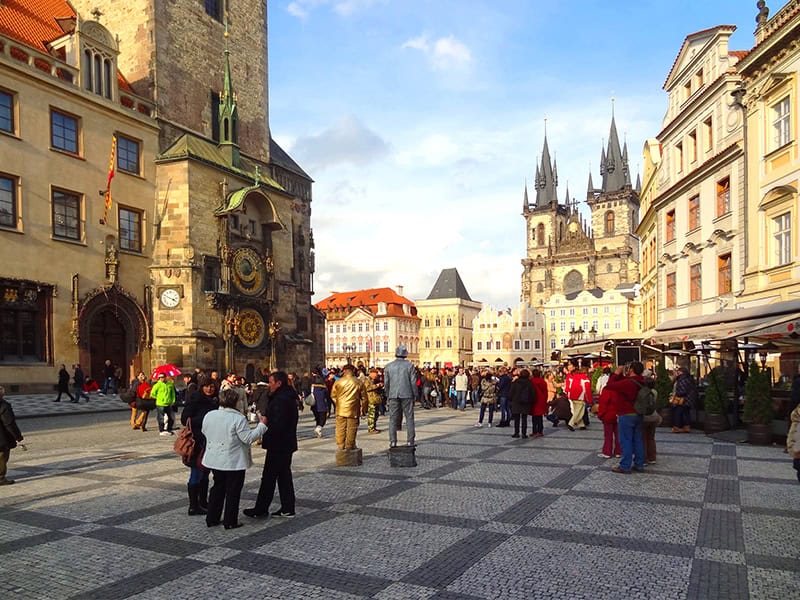
Beautiful Prague is a city best seen by walking. Here’s a quick guide for those things to do in Prague by foot.
Estimated reading time: 11 minutes
By Jim Ferri
Few cities in Europe are as stunning as Prague in the Czech Republic, now renamed Czechia in English.
It’s so stunning that it’s long been a hot spot for Hollywood directors seeking authentic Old World ambiance. If you’ve seen Amadeus, Les Misérables, Mission: Impossible, The Bourne Identity, and other films, you’ve already had a sampling of the city.
One of the great attractions for Hollywood is that this beautiful city has 600 years of incredible, original, and authentic architecture. And it’s all untouched by war.
You can easily see many of these stunning and historic places on a walking tour of Prague, following the interactive map below on your mobile phone.
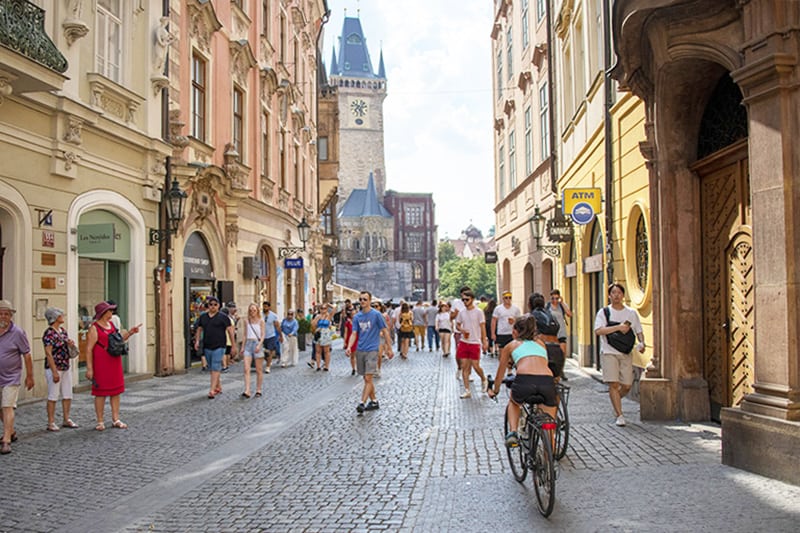
What to Do in Prague: Start at Old Town Square
There are many things to do in Prague, especially in the Old Town. You’ll find that the heart and soul of the city is Old Town Square. It’s one of the most beautiful public squares in the world. It’s the best place to start your walking tour of the city.
The huge square was initially a vast marketplace. Somehow, it has remained pretty much untouched since the 10th century despite numerous foreign invaders and World War II.
On the north side of the square is the Gothic Church of Our Lady Before Tyn. Look closely, and you’ll see that the church’s architects made the south tower larger than the north one, the custom of the time. Directly across from it is the magnificent Town Hall.
Like most city squares, it’s a stage for an ever-changing cast of characters, including musicians, protesters, vendors, and others. The buildings that surround it are a pleasant hodgepodge of architecture. They include the Rococo (Kinsky Palace), Baroque (St. Nicholas Church), and Gothic (Tyn Cathedral). Adding to the pleasing architectural cacophony is a row of small Renaissance-style houses.
A Map of Prague for a Short Walking Tour of the City
This map of Prague depicts a walking tour of the main places mentioned in this article. It is interactive; press +/- to enlarge it or make it smaller. It can also be viewed, and the route followed, on your smartphone.
The Old Town Hall and Astronomical Clock
Continue your tour of the city by walking to the southern side of the square to the Old Town Hall. There you’ll see the famous medieval Astronomical Clock (on the map it’s around the corner from the square). It’s both beautiful and ingenious, a 15th-century mechanism that not only tells time but also shows the movement of the planets around the earth, the sun, and the moon via signs of the zodiac.
Every day, at the hour, small statues dance, bells ring, and cocks crow. As you might suspect, a crowd gathers to watch the little spectacle. Grab a beer or glass of wine at a nearby café as you await the top of the hour. Even in winter, it’s comfortable in the cafés, since there are heaters there keep everyone relatively warm.
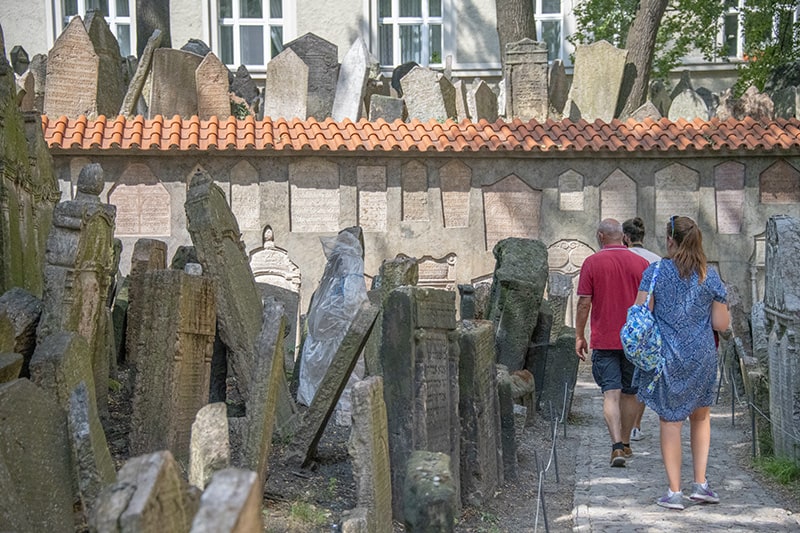
The Prague Jewish Quarter
Behind Town Hall is Josefov, the old Prague Jewish Quarter, where writer Franz Kafka spent most of his life. It dates back to the 12th century.
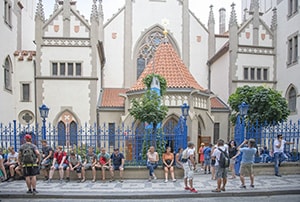
On your walking tour of Prague, you’ll see that the Quarter is a beautiful area today. It was, however, razed at the end of the 19th century after many Jews left, and it became a slum. It was replaced with a bourgeois district, preserving only four synagogues.
One is the Maisel Synagogue, a few blocks north of Town Hall, with a collection of Jewish silverwork. Further up the street are the Jewish Town Hall and the 13th-century Old-New Synagogue (Staronová synagóga). It’s the oldest in Europe and is still used for religious services.
Nearby is the Old Jewish Cemetery. First used in the 15th century, it was one of the few places available for the burial of Prague’s Jews. When it ran out of room, graves were added on top of one another. Today, it’s estimated that about 200,000 are buried here, even though the final burial place took place in 1787.
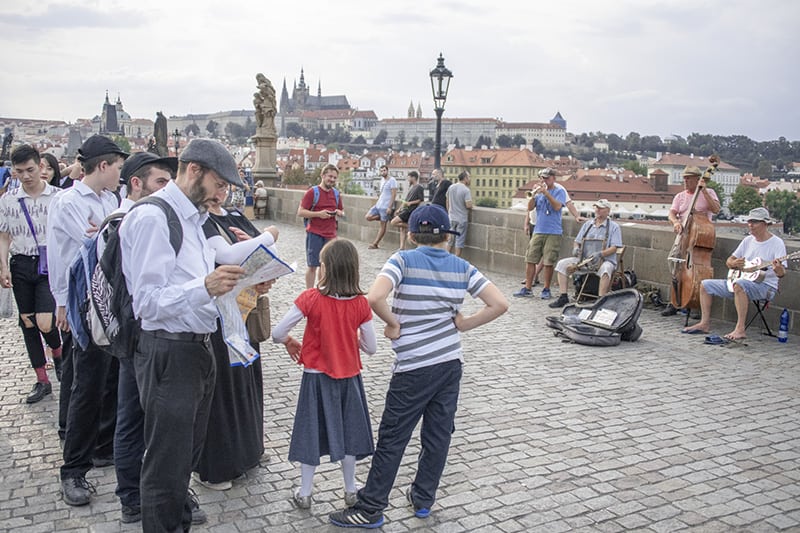
Cross the Charles Bridge for More of the Best Things to See in Prague
Prague is a very walkable city, and a short walk from the Jewish Quarter or Old Town Square, you’ll find the famous Charles Bridge.

Follow the route on your Prague map and continue your tour of the city by crossing the bridge. The Charles is a 600-year-old, 1700-foot-long Gothic-cobblestone bridge, built by King Charles IV.
Lined with Baroque statues of 30 religious figures, it’s one of the most famous bridges in the world. It’s also one of the most popular places in the city, and one of the best things to do in Prague. As you might expect, more often than not, it’s crowded with tourists, musicians, and all sorts of vendors and buskers.
Praguers love marionettes, and if you want to see something interesting after you reach the castle side of the river, follow the map and turn left, and walk under the bridge to a street on your left.
There you’ll find Marionety Truhlář, a marionette shop at U Lužického Semináře 5, Malá Strana.
Drop in, and you’ll find a large variety of marionettes – beautiful and whimsical knights, animals, fairies, all sorts of things – hanging from the ceiling, walls, and every conceivable spot.
They’re incredibly well crafted but, as you might suspect, not cheap. Still, though, you’ll likely find it fascinating.
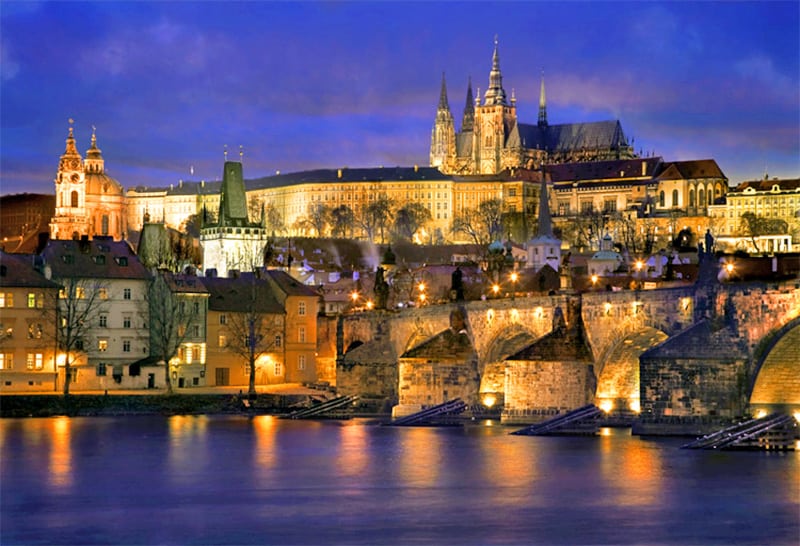
Prague Castle and Royal Palace
Following your map, continue along U Lužického Semináře on your tour of the city, the street on which the shop is located, and you’ll reach Prague Castle in about 15 minutes. If you set out for the castle from across the river, you can get to it via Tram #22. (For tips on public transportation in and around Prague, including how to travel to the city from the airport, see Getting Around Prague).
When you reach Prague Castle, you’ll realize that it’s not one castle, but a vast complex of buildings, about the size of seven football fields. In fact, it’s the largest castle complex in the world.
Once home to Holy Roman Emperor Rudolf II, the fairy-tale-looking complex includes churches, gardens, alleyways, and the Royal residence. Also inside its walls are the Old Royal Palace (the seat of Bohemian kings since the 11th century), St. George’s Basilica (the city’s most beautiful Romanesque monument), and numerous other buildings, including the beautiful St. Vitus Cathedral.
Much of the castle complex is free (although you must purchase a ticket to view the interiors). The guards change every hour, with special fanfare at noon.
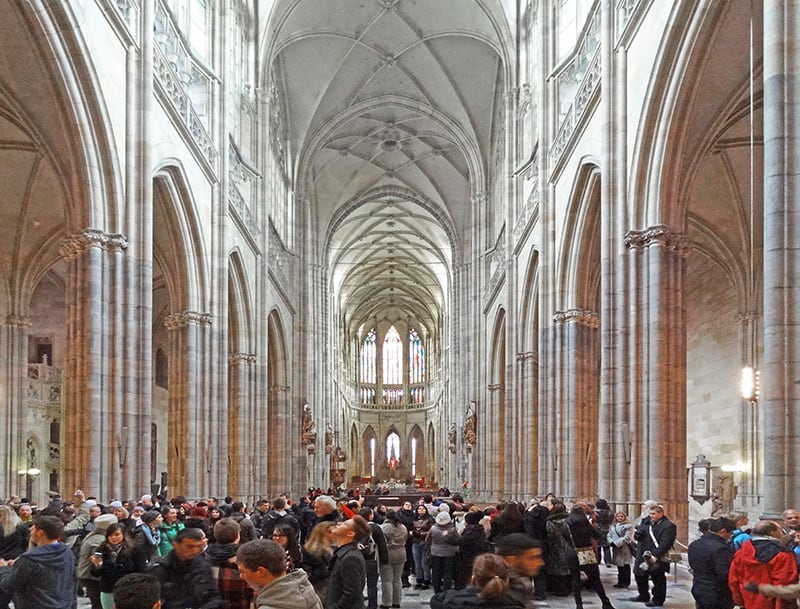
St. Vitus Cathedral
No walking tour of Prague would be complete without a visit to St. Vitus Cathedral the focal point of the complex. Its sparing spires can easily be seen from all over the city. Before you enter, however, first walk around to its right side to see the “Golden Portal,” which initially was the main entrance. It was named for the beautiful 14th-century Venetian mosaic of “The Last Judgment” above it, and it’s still used as an entrance on special occasions.
Inside, you’ll find one of the most spectacular churches you’ll see anywhere. When I first entered, I stood for a moment in total awe, just absorbing the beauty of its Art Nouveau stained-glass windows. Few people realize that Art Nouveau was introduced during the church’s construction; although work on the Cathedral began in 1344, it wasn’t completed until 1929.
In addition to the magnificent windows, the church is also the repository of the Crown Jewels of Bohemia and the remains of Good King Wenceslas. From here, you’ll want to follow your map of the city back to the Old Town Square.
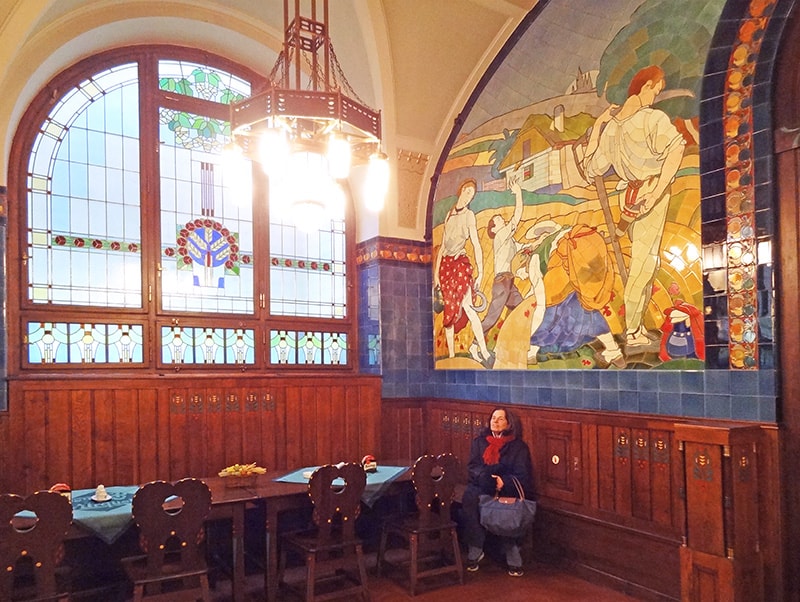
Municipal House
After our tour of the castle and Cathedral, we returned to the warren of little streets in Old Town. While wandering there, poking into lttle shops along the way, we were told by two shopkeepers we should visit the Municipal House. “Don’t miss it,” they said. Their recommendation was spot on, since it turned out to be one of the highlights of our visit. From the Old Town Square, follow your Prague map and walk down the street to the right side of the church on the square.
Built 1905–1911, it remains one of the most beautiful Art Nouveau buildings in Prague, thanks to restoration in the 1990s after decades of neglect during the Communist era, despite it being where Czechoslovakia was declared an independent state in 1918. You’ll find few places like it anywhere in Europe, or the world, for that matter.
At its heart is the beautiful Smetana Concert Hall, home to the Czech National Symphony Orchestra. But it was its exuberant Art Nouveau restaurants and bar that really caught our attention.
You may also enjoy: Prague in Winter, a Perfect Time to Visit / Day-Tours in 5 of the Best Eastern European Cities / 5 Unique European Sites for Jewish Travelers / Getting Around Prague
In the basement, is Plzenska, a beautiful Old-World Czech beer-hall-style restaurant with tile walls and stained glass windows. Next to it is the American Bar, a real old-style American bar. Drop in and they’ll whip you up a Manhattan, Gin Fizz, or another cocktail of your choice. It’s the oldest bar in the Czech Republic and, it claims, the second oldest in Europe.
But the real standout is its elegant restaurant Francouzska, a veritable dining museum of Art Nouveau exuberance, serving French, Czech, and International cuisine.
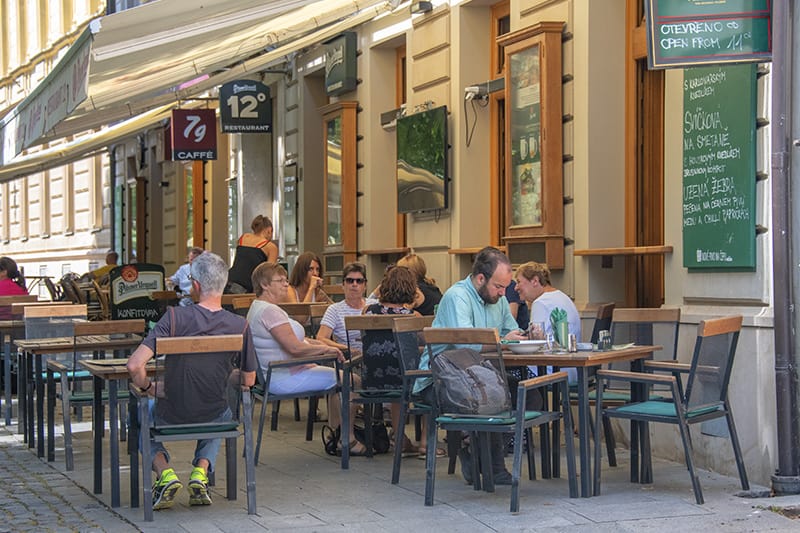
Day Trips From Prague
There are several worthwhile day trips from Prague you can take.
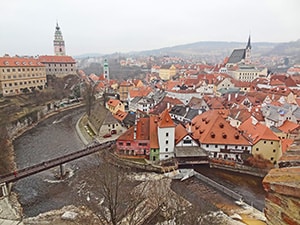
One of the most popular day trips from Prague is to Cesky Krumlov, a UNESCO World Heritage Site in southern Bohemia. About a two-hour drive south of the city, it’s a town of winding lanes, cobbled streets, and Renaissance buildings…and Cesky Krumlov castle, a fairytale chateau perched on a hilltop in the middle of town. Below the castle, the Vitava River makes a dramatic horseshoe slice right through the middle of town. Hollywood couldn’t have designed it any better.
Another good day trip from Prague is to Pilsen, about 1½-hours by train or bus from the capital. Pilsen is the birthplace of beer, the #1 reason for its popularity, and tours of the Pilsner Urquell Brewery are a favorite.
There’s much more to do in Pilsen, however, than tour the brewery. You’ll find Old Town beautiful and the Pilsen Techmania Science Center a treat for kids (and some adults, as well). If you love wine and bubbly, enjoy a flute at the Stary Plzenec-Bohemia Sekt plant outside the city.

We are in Prague now, so all this information is quite valuable! Definitely, we will follow your tips what to do. Thank you for a great, informative feature story. It is an exciting city.
Thank you for the kudos! Have fun, despite the extreme heat. Last week the fire department was spraying water over the crowd at the Old Town Square!
Thank you Jim for your valuable tips on touring Prague. You can bet Prague is my next travel destination solely due to your recommendation.
PSanjeev Reddy
Glad you enjoyed it. And I know you’ll enjoy Prague when you visit.
Hi Midge,
The best months to visit Prague would be May and late September/early October which will give you great weather with few crowds (and lower prices).
Jim